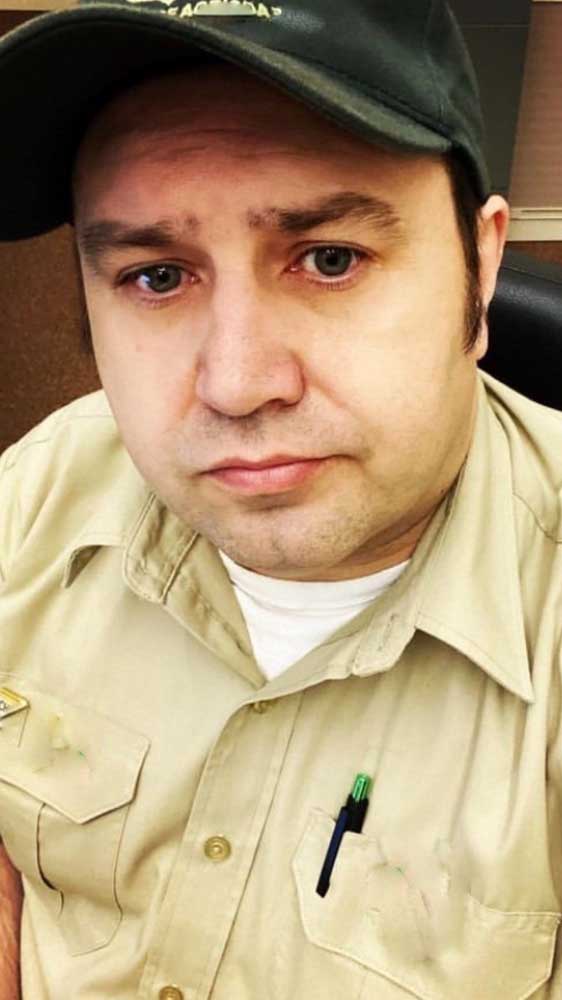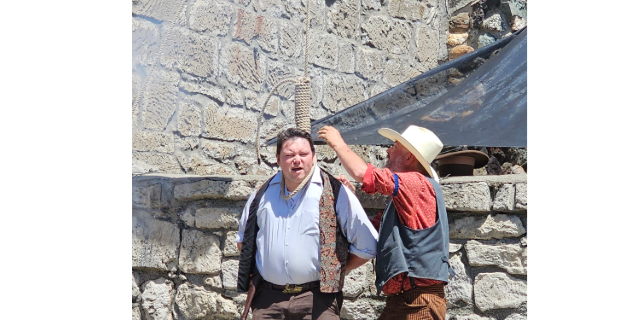Four wheels and a motor – economy style, 1906
Published 5:00 pm Wednesday, September 30, 2009

- <I>Contributed photo</I><BR>Above, Bob Stewart, at left, and two Canadian visitors to the Grant County Historical Museum look over the "Orient Buckboard." The 1906 "economy model" is currently on display and undergoing maintenance at the museum.
At the beginning of the 20th Century there were about 800 American-built cars on the roads in this country. Each cost about $1,000.
By 1903, there were more cars, but the retail price hadn’t changed much at all.
At New York’s Madison Square Garden Auto Show that year, one exhibit broke the mold. The new “Orient Buckboard” was manufactured by Waltham Manufacturing Company of Waltham, Mass.
The “Orient” was the economy model of its day. Four wheels, a motor and economical operation for only $400, or $412, with a top! The model had a one-cylinder, air-cooled, four-horsepower engine with drive by pinion and a large spur gear on the differential.
It was lightweight and a great option for a country doctor’s auto. No road was too muddy nor any road too rough for the 600-pound “Orient.”
There were two models available: a four-seater, or the more popular two-seater which cost $50 less. The 1906 steering was by a centrally-located tiller bar. The controls were on the floor and the left side of the front seat. The clutch and brake pedals were also on the floor. The brakes operated from drums on the rear wheels. The engine was located in the rear.
The frame of the Orient was made of ash or hickory with an all-wood body, flared wood fenders and four elliptical springs. The car measured 106 inches overall and is 48 inches wide. Even the wheel rims were of wood with steel wire spokes. It started up with a jump spark and a dry battery.
The “Orient Buckboard,” which is part of the Grant County Historical Museum collection, was owned by John Wheeler Saxby Hall of Prairie City. He was the son of Henry Hall who owned the Hall Brothers Ranch, later known as the Columbia Ranch, four miles west of Prairie City.
Hall’s brother was Egbert (Bert) Henry Hall, who was part owner of Kight Hall Hardware Company in Prairie City in the 1910s. They sold implements, vehicles and automobiles. This probably gave John Hall access to the “Orient” and the Hall family history reports that it was the first car in Grant County.
The last time the auto was operated was in the centennial ’62 Days parade in Canyon City.
In May of this year, the museum board voted to restore the “Orient” with the aim being able to run the car in future parades. Bob Stewart undertook the mechanical work, replacing wiring, oil and gas lines, and working on the engine and carburetor to get them in running condition.
Cecil Gagnon has been working on the wooden parts of the car and the Oxbow Trade Company was able to find tires for those wooden rims. Jim Jensen’s Amish friends made the wood fenders and will reupholster the seat and seat back in a diamond and button pattern.
The local Cultural Trust Fund granted us $1,000 and the museum budget added $500 for parts and supplies. Work will continue through the winter as needed. We’re excited about the project and we hope soon to see the “Orient Buckboard” cruising the streets of Canyon City!
The owner’s manual and instruction book make for interesting and delightful reading and these are on display with the car at the museum. The last suggestion in a list of operating “don’ts” reads: “Don’t think the machine is ‘no good’ because you don’t know how to run it. The trouble is most likely due to your inexperience!”
Probably good advice for the cars of today, too.
Jayne Primrose is curator of the Grant County Historical Museum in Canyon City.





